
Edward Winter

White to move and draw
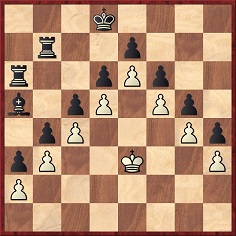
Position after 6 f5
***
Only one composition in Irving Chernev’s Chessboard Magic! (New York, 1943) was marked ‘Anonymous’:
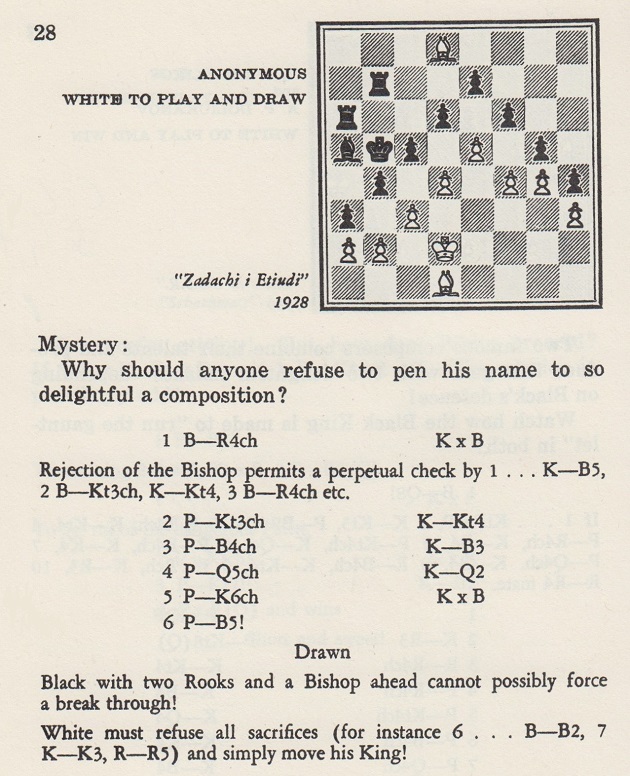
From page 118 of Die Kunst der Bauernführung by Hans Kmoch (Berlin-Frohnau, 1956):
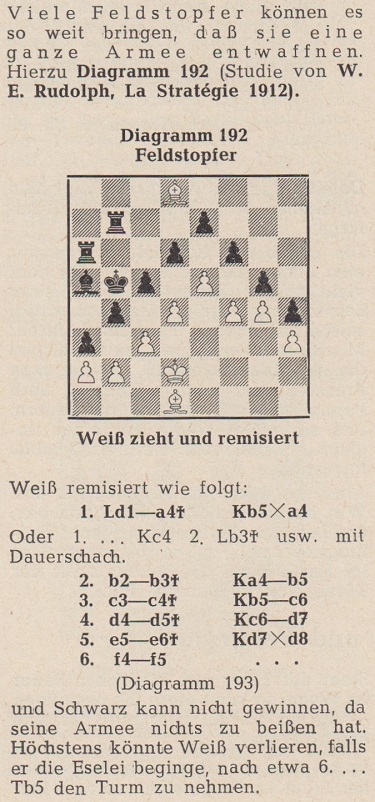
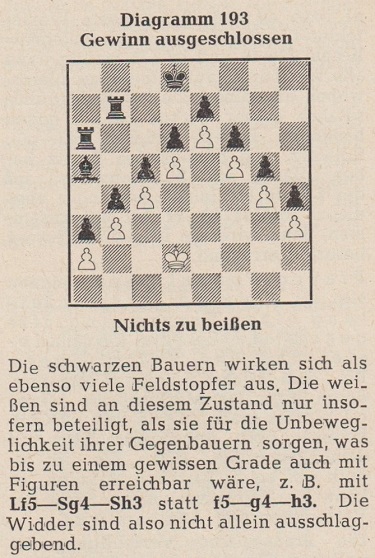
Below is the English-language version, i.e. from pages 174-175 of Pawn Power in Chess (New York, 1959):
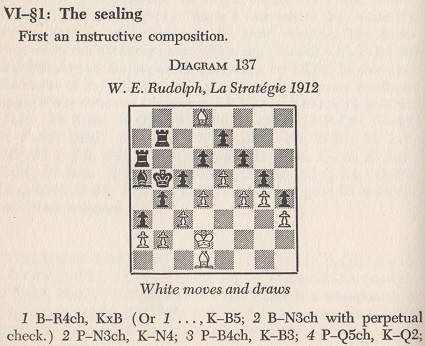

However, the reference to La Stratégie is sub-par, given that the French magazine (April 1912 issue, page 156) mentioned the study’s prior appearance elsewhere [with, it will be noted, the white king on e3]:
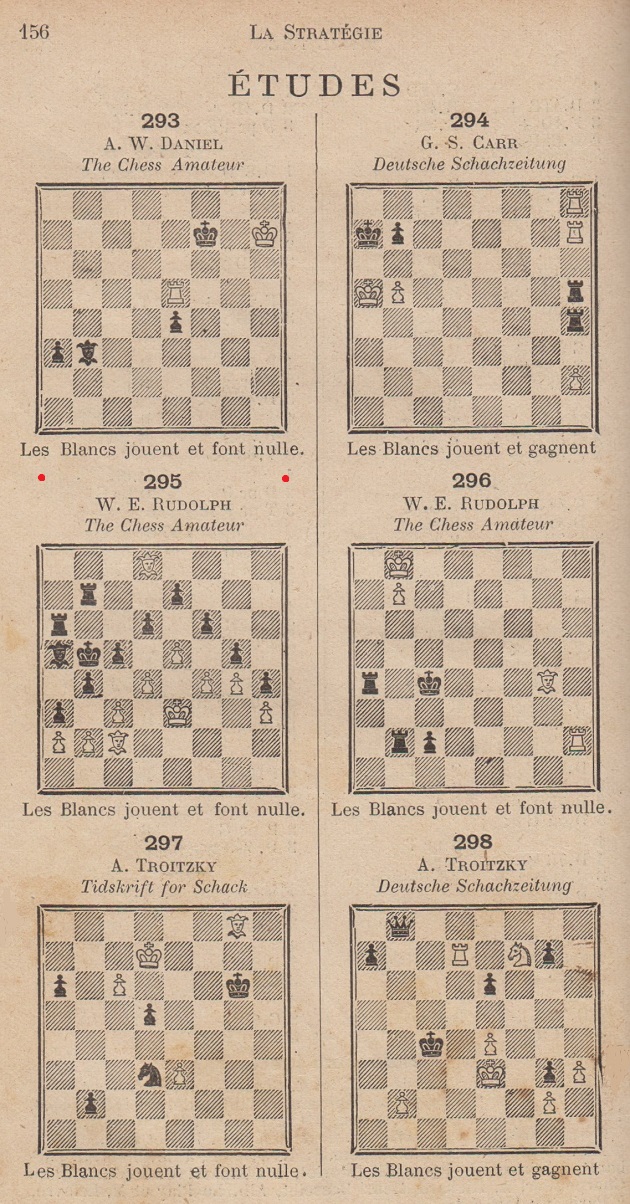
Below is that composition by Rudolph on page 184 of the March 1911 Chess Amateur:
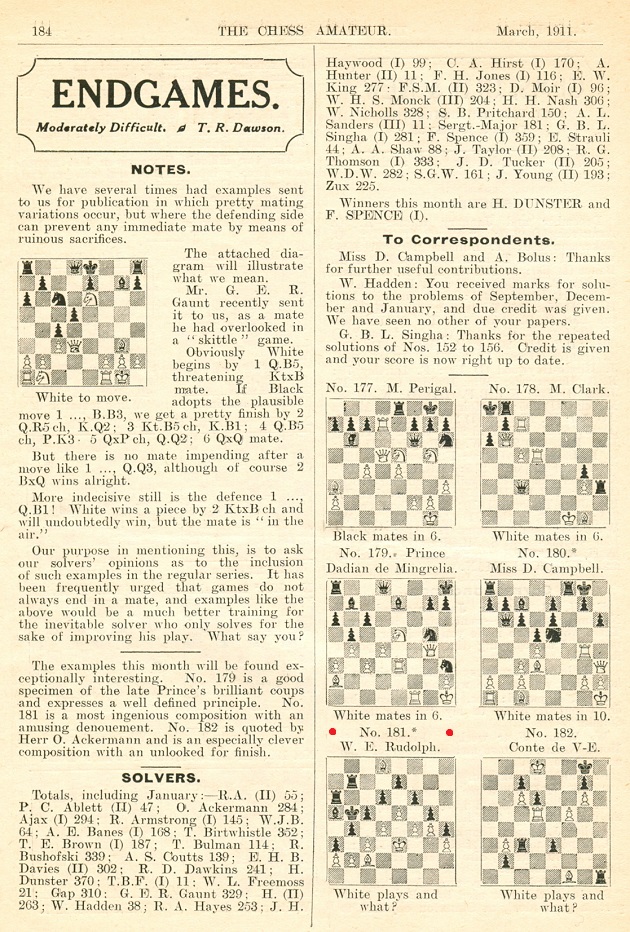
The solution was published on page 224 of the April 1911 Chess Amateur. William E. Rudolph of Brooklyn, NY was a regular contributor to the magazine.
These historical details were confirmed exactly a decade ago; we assisted Frederic Friedel with his presentation of the study as a Christmas puzzle at ChessBase on 26 December 2009.
For many further examples of the theme, see the chapter ‘Building a Fortress’ on pages 183-198 of The Art of the Endgame by Jan Timman (Alkmaar, 2011).
(11638)
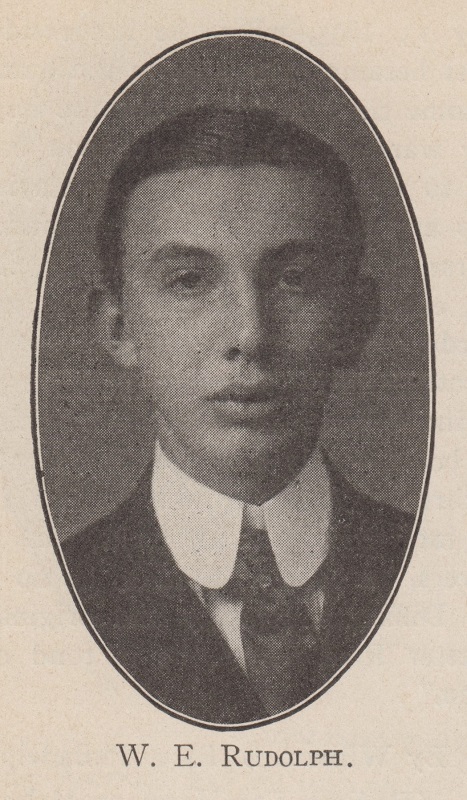
American Chess Bulletin, December 1912, page 274
From the following page of the Bulletin:
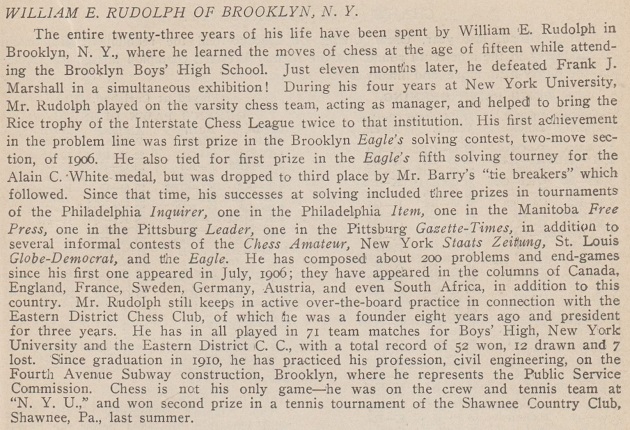
A brief mention of Rudolph’s victory over Frank Marshall was published in the New York Tribune of 17 December 1905, page 9:

The date of the display was thus 14 December 1905.
Richard Forster (Winterthur, Switzerland) sends the detailed information about William Edward Rudolph available at ancestry.com, and here we show just the heading:

In addition, Richard Forster has provided a number of newspaper cuttings, including the following from page 28 of the Arizona Daily Star, 2 August 1975:
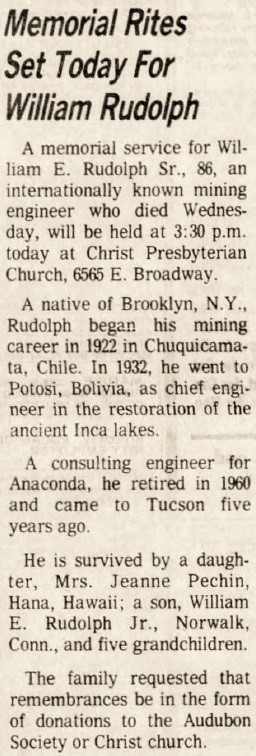
Below is the first of two problems by Rudolph in the chess column of the St Louis Daily Globe-Democrat, 8 December 1912, page 4b:
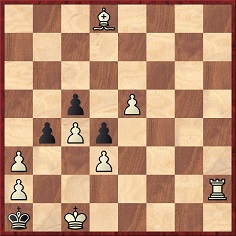
Mate in four
(11643)
A striking surprise occurred in this position, from a game between Augustin Neumann and Aron Nimzowitsch in Vienna in March 1905:
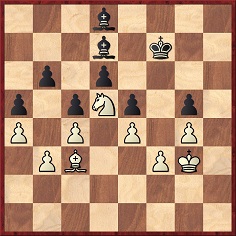
Neumann (who, in fact, had the edge) brought about a ‘fortress draw’: 51 Bxe5 dxe5 52 Nxb6 Bxb6.
Source: Schachjachrbuch für 1905. I. Teil by L. Bachmann, page 25.
(2852)
To the Chess Notes main page.
To the Archives for other feature articles.
Copyright: Edward Winter. All rights reserved.